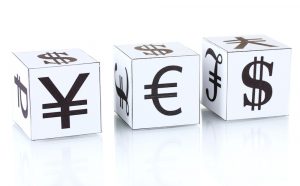 As a trader on the market in forex trading, understanding which currency pairs to trade and when is fundamental. Typically, beginning traders stick to well-known pairings such as EUR/USD, USD/JPY and GBP/USD, but there are other variations and currencies that can lead to bigger profits. Here we take a look at some other main currencies and when you can use them to boost profits when trading in forex or CFDs.
As a trader on the market in forex trading, understanding which currency pairs to trade and when is fundamental. Typically, beginning traders stick to well-known pairings such as EUR/USD, USD/JPY and GBP/USD, but there are other variations and currencies that can lead to bigger profits. Here we take a look at some other main currencies and when you can use them to boost profits when trading in forex or CFDs.
Safe haven currencies
Generally, the two big categories you must know about as part of your trading strategies are safe haven versus commodity currencies. As the name suggests, safe haven or refuge currencies are seen as safe investments during times of financial turmoil. These currencies are viewed as stable and more immune to extraneous market factors that could, for example, devalue them in a short space of time.
The major safe haven currencies have traditionally been the US dollar, the Japanese yen, and the Swiss franc.
From time to time, the Australian dollar is also seen as a safe haven currency, as are select others. If you’re looking for a refuge currency in times of market distress, these currencies are characterized by being used in countries with socio-economic stability, a steadily low inflation rate, and balanced payments surplus.
The US dollar is, not surprisingly, the most well-known and widely traded currency. More than 60% of the globe’s forex reserves were held in dollars in the last decade, and that is not bound to change much. That’s because despite political climates changing, the US dollar is seen as a steadfast and reliable currency. Positive data on the US economic front therefore tends to strengthen the dollar.
As a sophisticated trader, you can never take anything for granted, especially if you’re trading in very large volumes as minor fluctuations can play a role. You should always, for example, be on top of all Federal Reserve policies and potential rate hikes.
Similarly, the Japanese yen is attractive. It’s so appealing, in fact, that it can strengthen even when there is negative news emerging from Japan. This is because, at least in part, many local Japanese investors expect others to flee their currency in times of bad news. They then send their own money home from abroad, and the impact can be enough to strengthen the currency. The Swiss franc is aided by Switzerland’s political neutrality and sophisticated banking sector.
Commodity currencies
A commodity is a basic good used in commerce such as oil, gas, coal and precious metals. Commodity currencies are tied to the countries where these commodities are found. Examples include the Canadian, New Zealand and Australian dollars, the Russian ruble, and the Norwegian krone. There are many more, but as they are often subject to high levels of government regulation, they are not as freely traded as the ones mentioned.
What sets these currencies apart is the fact that they are sensitive to what’s going on in the world of exports, can be highly influenced by market sentiment, and will logically strengthen when the demand for resources is on the rise. This is because these countries derive higher income from selling commodities when they’re more expensive. They are then in a position of strength, allowing them to increase interest rates, leading to an influx of foreign investment thanks to the higher rates of return.
These investors deploy a carry trade strategy, which involves borrowing money in those currencies where the rate of return is low, then invest them in higher-yielding currencies linked to commodities. If the situation reverses and conditions become averse, there is high risk as commodity currencies weaken.
As with safe haven currencies, it is critical to be on top of global economic data. As you grow in confidence, you’ll be able to pick out even more varied pairings of your own for bigger returns.